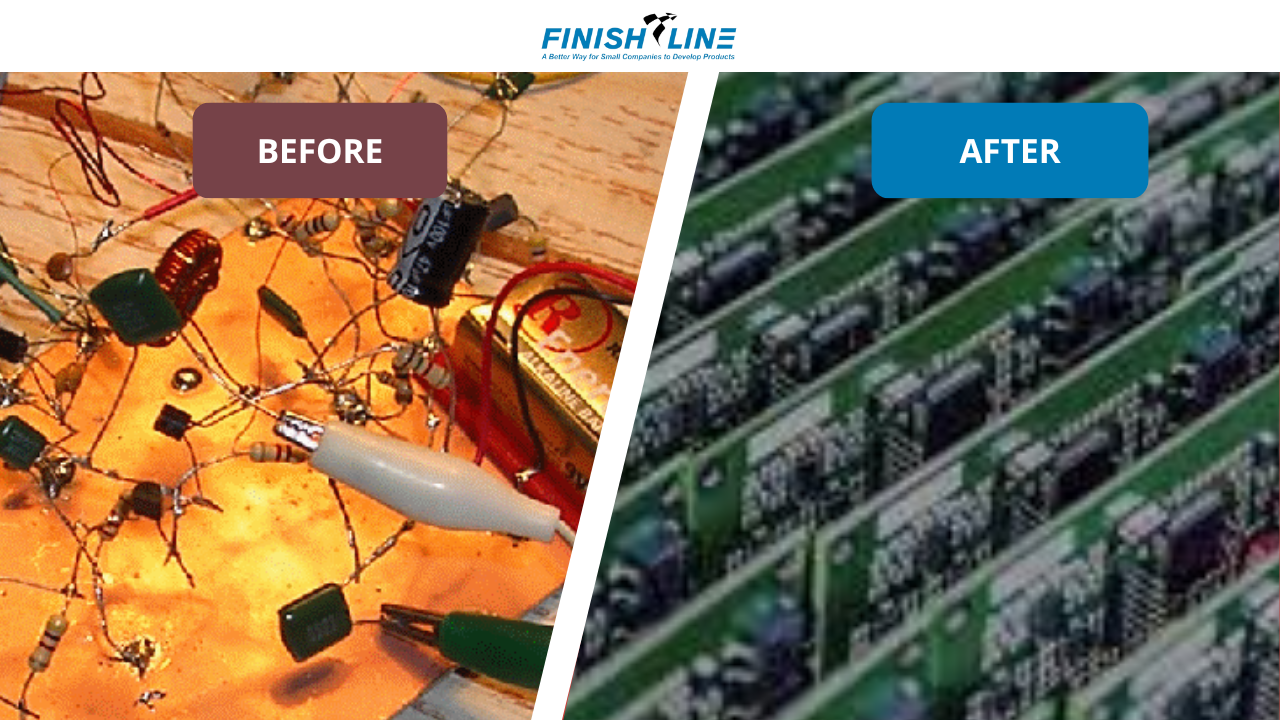The prototype is all done and it seems to work well. Now, how do you get the prototype manufactured reliably and at a reasonable cost? If your team is at this stage, here are a few things to think about:
Do a Design Verification Test (DVT)
Just turning your prototype on and seeing the lights flash is a good start, but we need to go further before we start scaling the product. Each requirement (See our Requirements Document Template here) should be verified. Verifying that each product requirement is “working” is the purpose of a DVT.
Tip: It is often a good idea to use a different team to do the DVT in order to avoid groupthink.
BTW — you can download our DVT template here.
Make sure your documentation is in order
Manufacturing can/should only do what is documented — so-called “drawing compliance.” If it is important, it should be written down. Don’t expect your CM to design the product for you or that they should “just know how to do it”.
Everything that is necessary for the product to meet the requirements must be written down in a control drawing set.
It is also important to have a drawing control system and a process for ensuring that manufacturing is using the correct drawings.
If you’re in doubt about your documentation, call us and we will be happy to review it for you.
Do some field testing
No product survives first contact with a customer.
Before scaling, let customers run it through its paces in an as real-world environment as possible. We are always amazed at the learning that comes from early field trials, and the earlier this happens, the sooner these issues can be resolved.
It’s important to understand that you will learn stuff at a build-quantity of 100, and different stuff at a build quantity of 1,000, and even different stuff again at a quantity of 10,000. Typically it is wise to ramp production slowly and delay capital purchases (molds, test fixtures, ASICs, etc) until this learning is complete.
Choose the right CM
There are lots of great CMs out there, but that does not mean they would be great for this product or your team. Do your due diligence and understand what makes a good partner for you. This will be a long-term relationship in which each side will have to make an investment.
Most CMs quote “open book”, that is, they will tell you what the parts cost, their burden labor rate, and their profit.
Parts cost can change every 5 minutes, so it is not likely anyone can tell you exactly what your product will cost six months from now. CMs with bonded warehouses can save money (buying in higher quantities) and give better terms — they don’t pay for the parts until they pull them from the warehouse.
It is a very competitive world out there. If someone has a higher labor rate, it does not necessarily mean they are going to be higher cost. It likely has something to do with quality and ability to manage more complex assemblies. Do not choose a CM on price alone.
You want to be sure that the CM you work with will be a good long-term partner. Switching CMs can be very costly, and may result in lost revenue. We typically advise our clients to have two CMs just in case and give half the work to each. It is also important to make sure you are matched well to the CM in terms of revenue. You do not want to be their largest customer, nor do you want to be the last guy on their list. Make sure you will not outgrow them, or not grow fast enough to be a relevant customer.
Do not ignore red flags
Any failure, issue, oddity, etc., should be fully vetted in the early stage of product launch. Find the root cause of the failure and implement corrective action before you go any further. It’s important to understand why it failed. Did the user use it outside the specification? Did the manufacturer not follow the instructions/drawings? Do the drawings always produce a product that meets the requirements — tolerance stackup, inadequate QA procedures, etc.
A working prototype is a great first step, but it takes careful planning and a lot of work before your prototype turns into a product that can be manufactured successfully.
If you find yourselves being pulled into the next project before you have time to finish this one, take a look at our Prototype to Production – Finish Line Product Development program and give us a call—we can help.



0 Comments